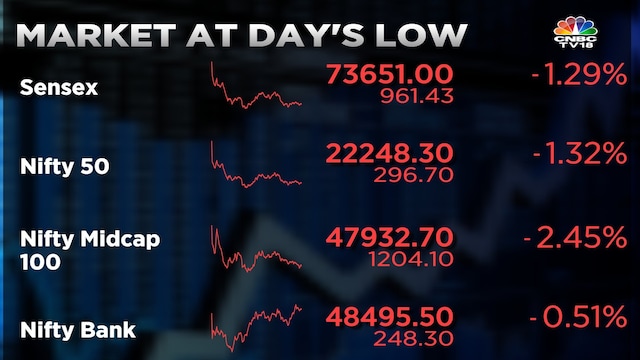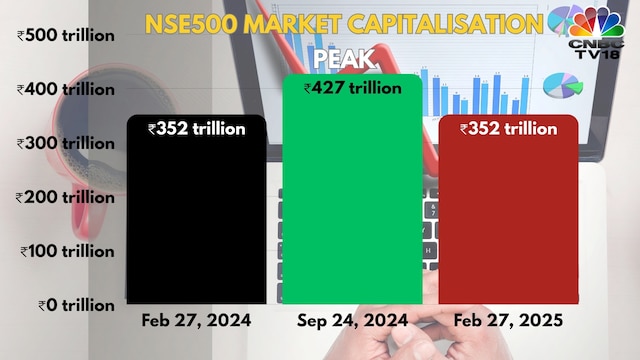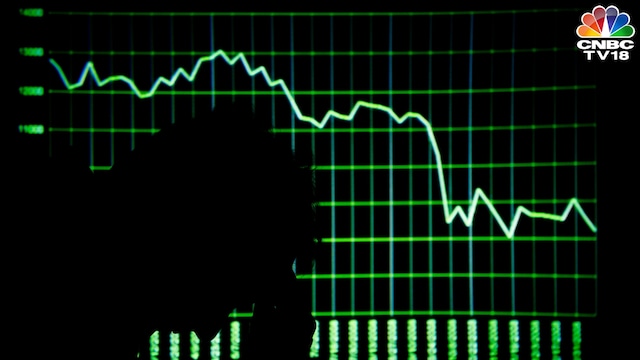SUMMARY
Foreign investors have pulled out over $25 billion from Indian stocks as of Feb 27. The sell-off intensified on Friday morning as the combined value of all the stocks on the Bombay Stock Exchange fell by over ₹6 lakh crore in the first hour. There are at least two big reasons for the dollar exodus from Indian stocks.
 By CNBCTV18.com February 28, 2025, 12:28:07 PM IST (Published)
By CNBCTV18.com February 28, 2025, 12:28:07 PM IST (Published)

1 / 6
In the first 45 minutes of Friday's trade, Indian stocks lost a whopping ₹6 lakh crore in value on the Bombay Stock Exchange (BSE). The selloff worsened by midday. Index values as of 11:30 am on Feb 28. While the latest bout of sell-off was triggered by the rout on Wall Street, the exodus of foreign portfolio investment has been a trend since since September 2024.

2 / 6
While the Nifty50 and Sensex are down over 15% from their recent peaks, the damage has been much worse in the mid and smallcap stocks, a point highlighted by the Chris Wood of Jeffries in the latest Greed and Fear report. Gautam Duggad of Motilal Oswal highlighted that, as of Feb 27, the market capitalisation of the NSE500, the index of the top 500 listed stocks in India, had returned to the level seen exactly a year ago.

3 / 6
Overseas investors hold nearly 16% of the Indian equity market, and their returns largely depend on a recovery in corporate earnings and a decline in U.S. bond yields. They have sold over $25 billion worth of Indian stocks since September. Moreover, $26 billion worth of shares allocated during recent IPOs will see their lock-in period in the coming months. Some of the stocks that could be affected include Hexaware Tech, Dr Agarwal Health Care, Ajax Engineering, Premier Energies, and Waree Energies.

4 / 6
While the sell-off initially began due to stretched valuations and concerns over slowing economic growth, it has intensified in recent weeks amid rising US bond yields and a stronger US dollar, Yoosef K reported in his analysis on Thursday. Even after the recent decline, the Nifty 50 index continues to trade at a premium valuation of 19 times its one-year forward earnings. In comparison, South Korea’s Kospi is valued at 9.2 times, while China’s Shanghai Composite trades at 12 times. This makes Indian equities relatively expensive compared to Asian peers.

5 / 6
With the U.S. 10-year bond yield above 4% and expectations of a 5% depreciation in the Indian rupee this year, global investors are looking at a nearly 9% risk-free return. This makes parking funds in US bonds a safer and more attractive alternative compared to Indian equities.

6 / 6
The fear of fresh tariffs on Indian exports to US is adding to the investors' fears. However, as Jefferies pointed out, President Donald Trump would like to see the dollar weaken and that could be good news for economies like India. CNBC-TV18 had explained the possibility back in July 2024. All else remaining equal, when the market expects the dollar to get stronger, global capital flows back to the US and vice versa.

 1 month ago
1 month ago










